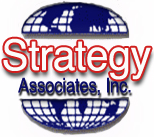Preface – The Roadmap to High Performance
“Much of our fear is fear of change in the status quo, a fear that we might lose what we have if we venture forth from where we are now. People find new information threatening because if they incorporate it they will have to do a good deal of work to revise their maps of reality, and they instinctively seek to avoid that work. Consequently, more often than not they will fight against the new information rather than assimilate it.” –Scott Peck, The Road Less Traveled
The Roadmap to High Performance is about “do-it-yourself quality.” I was first introduced to the notion of “do-it-yourself quality” by Curt Reimann, past-Director of the Baldrige program. During a conversation at the Office of Personnel Management (OPM) government training center in Denver, he referred to the Baldrige criteria as “more of a do-it-yourself kit in achieving high performance than anything that has previously been on the market.”
The notion of “do-it-yourself quality” has a tremendous amount of appeal to businesses throughout the world today for it puts responsibility in the hands of the people who want to, and can, improve their organizations. It is the exact opposite to “delegate-it-to-someone-else quality,” which is a typical approach when people do not understand what quality improvement means, where to start, and how to do it. Anxious to get something started to improve their operations, they delegate it to someone in their company or department–the company’s professional–or to some outside consultants. In other words, they delegate, not just improvement, because the entire business seems too complex.
The fact is, while it can be complex, it cannot be delegated. Each individual must take personal responsibility for quality, or efforts to improve will flounder and fail. The Roadmap for High Performance criteria stress driving an organizations quality values from senior executives to all managers and supervisors, and then to all employees. With management heavily involved, every member of the organization can take personal responsibility, and quality performance improves.
“Do-it-yourself quality” implies that quality management is a do-it-yourself effort, and it is. If we study and quality leader anywhere in the world, we will discover that they made their own decisions about pursuing high performance quality, charted their own course, improved their own processes, trained their own people, served their own customers, and managed all the tasks necessary to improve. These companies did it themselves and so can you. But you can’t do it alone.
An essential part of the Roadmap for High Performance is the desire and ability to learn from others, whether through Benchmarking, studying quality leaders, making comparisons, taking quality training, and hiring professional consultants from a local center. Do-it-yourself quality does not mean that you do it all by yourself. Pick any Baldrige or Sterling winner and you will see that they practice a distinct “house-brand” of quality that is constantly being challenged and improved upon by borrowing shamelessly from every possible source. The Roadmap for High Performance is a do-it-yourself kit for transforming your organization. May you use it wisely and well.
